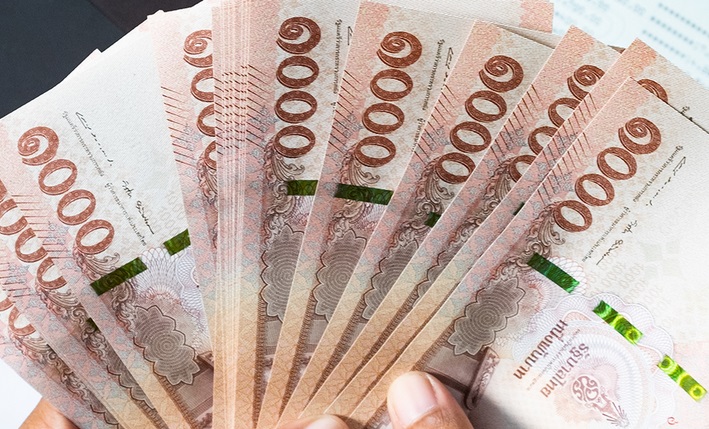
BANGKOK, Thailand – According to Poon Panichpibool, a strategist at Krungthai GLOBAL MARKETS, Krungthai Bank, the Thai baht opened on Wednesday (Oct 10) at 33.54 per U.S. dollar, slightly weaker from the previous close of 33.45. The baht is expected to fluctuate between 33.35 and 33.70 baht per dollar, with potential volatility as markets await the release of the U.S. Consumer Price Index (CPI) inflation report.
Since last night, the baht has gradually weakened, moving within a range of 33.42–33.55 baht per dollar. The U.S. dollar has continued to strengthen alongside a rise in the 10-year U.S. Treasury yield, which is approaching 4.08%. Market participants have increased the likelihood that the Federal Reserve (Fed) may hold interest rates steady in its November meeting, raising the probability to around 20% according to the CME FedWatch Tool.
Additionally, the upward movement in the 10-year U.S. Treasury yield has been fueled by market speculation that the Fed may not rush to cut interest rates as previously expected. Investors now forecast the Fed might only reduce rates by up to 100 basis points next year. This, along with reports of a ceasefire negotiation between Hezbollah and Israel, has also pressured gold prices, pushing them down to the $2,600–$2,610 per ounce range. As a result, some market participants have increased their purchases of gold, further weakening the baht beyond 33.50 baht per dollar.
Beyond these factors, the baht may face additional pressure from foreign currency flows, particularly the Japanese yen. The strengthening of the U.S. bond yields has caused the yen to depreciate to 149 yen per dollar, with the yen-baht (JPYTHB) exchange rate falling below 22.50 baht per 100 yen.
The focus will be on the U.S. inflation report for September, with analysts predicting the CPI to slow to 2.3%, while the core CPI is expected to remain stable at around 3.2%. Markets will also monitor U.S. labor market data, including jobless claims, and watch for statements from Fed officials to gauge the future direction of interest rates.
In Europe, investors are awaiting the European Central Bank’s (ECB) latest meeting minutes to assess the likelihood of further rate cuts, potentially up to 50 basis points, in the remaining meetings this year.
Market participants will also closely monitor the Middle East situation, particularly Israel’s response to Iran, and its potential impact on oil supply from the region.
Overall, the baht is expected to move sideways before the U.S. CPI report is released. However, the currency could face depreciation pressure due to foreign currency flows, especially from Japan, and commodity transactions in gold and crude oil as their prices continue to drop.
The market is advised to be cautious of potential volatility, particularly after 7:30 PM Thailand time when the U.S. CPI report is released, as the baht could swing up to +/-0.5% within 30 minutes after the report is made public.








